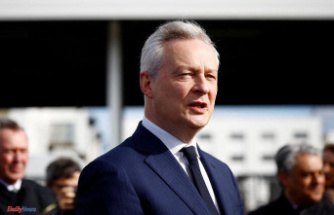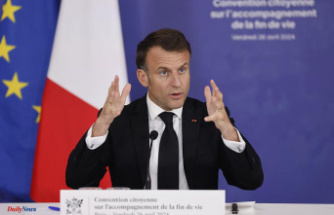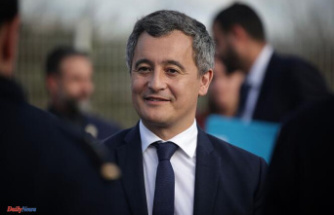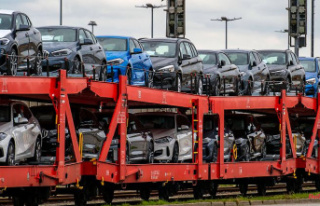The Ukrainian army has been defending itself against Russian attackers since February. A high combat readiness and numerous weapon deliveries help. After more than seven months of war, it's time for an overview: What war equipment is Ukraine using to defend itself?
When Russia invaded Ukraine on February 24, most pundits and military observers, and most notably the Russians themselves, are convinced that Kiev's troops will quickly be overrun. At the time, Russia's plan was to overrun Ukraine in a flash, take the capital Kyiv within a few days and overthrow the government of President Volodymyr Zelenskyy. But the plan goes horribly wrong.
Seven months later, Russia still occupies almost 20 percent of Ukraine's territory, but the course of the front has turned in Ukraine's favor in recent weeks. On the one hand, this is due to the great willingness of the Ukrainians to fight, on the other hand, to the arms deliveries from the West.
What is often forgotten, however, is that Ukraine had already massively upgraded its troops before the Russians invaded in response to Russia's annexation of Crimea in 2014 and the start of the war in Donbass. "Not only in Russia, but also in the West, the military power of Ukraine has long been underestimated. After all, Ukraine is the second strongest in Europe if you ignore Turkey," notes Colonel A. D. Wolfgang Richter from the Stiftung Wissenschaft und Politik (SWP) in the ntv podcast "Learned again".
On the day of the Russian invasion, Ukraine had 255,000 active-duty troops, plus the National Guard. At the beginning of the war, the Ukrainian military owned 1,100 main battle tanks, 1,200 infantry fighting vehicles and almost 2,000 artillery systems. Richter estimates that around 700,000 professional soldiers, reservists, conscripts and volunteers are currently deployed. This means they are superior to the attackers in terms of personnel. So far, a maximum of 350,000 Russian soldiers are said to have been in Ukraine at the same time. This is one of the reasons why Russian President Putin announced the mobilization of new soldiers. According to research by the exile medium Novaya Gazeta, up to a million Russians can now be drafted.
Not only the number of soldiers is decisive for the course of the war, but of course also the war equipment available. "This famous exchange of rings has already resulted in significant supplies of heavy equipment that the Ukrainians know and can use immediately," says expert Richter in the podcast, referring to the Soviet T-72 and similar tank types from Poland, the Czech Republic, Slovenia and the Slovakia were delivered to Ukraine. "More than 200 T-72s came from Poland. The ring exchange or these Soviet-design deliveries account for about a quarter of the Ukrainians' initial strength and compensate for a large part of their material losses."
The colonel a. D. of the Bundeswehr divides western arms deliveries into three categories: First, standard war equipment, and the ring exchange material. Systems common in the Soviet Army. This is also the standard that Ukraine itself has. In this respect, they can use them immediately at the front without any additional training. The Strela anti-aircraft missile, which Germany supplied from old GDR stocks, is also one of them.
The second type of war equipment are the western-style guns. This is very good quality material, but not the newest of the new. The third category, these are the highly modern weapons. Richter includes the Switchblade drones, the HIMARS and MARS II multiple rocket launchers, the American Stinger anti-aircraft missile, but also the German Panzerhaubitze 2000.
According to the federal government, Germany has so far sent 30 Gepard anti-aircraft tanks, more than 54 M113 armored personnel carriers, 500 Stinger anti-aircraft missiles and 2,700 Strela anti-aircraft missiles.
"Western deliveries don't just consist of weapon systems. I think that our discussion in Germany is a bit narrow at the moment, we're only talking about the Leopard main battle tank. The more important question is: Can such a war be sustained in the long term. The logistical supply must secured, the artillery alone fires 5,000 to 6,000 shots a day," analyzes military expert Richter. Coping with the logistical challenge of bringing tons of war equipment to the front is "actually much more important than the question of whether another 30 or 40 main weapon systems will be delivered."
According to Richter, the question of what effect a specific weapon system would have in combination was more important anyway. Means: war is not a duel between individual weapon systems, but it is always about how to coordinate the different weapon systems. "Armored infantry fighting vehicles, main battle tanks, the dismounted infantry, the engineers, the artillery, the anti-aircraft defenses, everything has to be coordinated. And the Ukrainians are acting in a much more coordinated manner than the Russian army," analyzes the ex-colonel.
So far, no NATO country has supplied battle tanks, but heavy weapons in general are not being held back. Ten models of the German Panzerhaubitze 2000 are used in the Ukraine, four more are to follow. The USA, Great Britain, France, Italy also supplied various artillery systems. "A total of 150 to 200 artillery systems have been delivered so far. In addition, there are 1,800 systems that Ukraine had at the beginning of the war. That means towed guns, self-propelled howitzers, heavy mortars, but also multiple rocket launchers," says Wolfgang Richter in the podcast "Learned again".
The United States has now sent 33 HIMARS multiple rocket launchers to Ukraine, according to a Pentagon overview. Germany has so far delivered three MARS II multiple rocket launchers, and Great Britain has also delivered this type of rocket launcher to Ukraine. These state-of-the-art rocket launchers are far superior to the Russian artillery "in terms of range and precision and are therefore correspondingly effective," explains Richter.
But when it comes to drones, too, Ukraine gets the latest from the latest. The United States has delivered Switchblade 300 kamikaze drones, with the Switchblade 600 to follow.
The artillery ammunition of the Vulcano type, which Ukraine is receiving, is also state-of-the-art. This is precision ammunition that is still being tested by the Bundeswehr and will probably not be used by the German military until 2025. The Ukraine is the first user in the world and is expected to fire the "insensitive multi-purpose warhead" with a range of up to 70 kilometers from the Panzerhaubitze 2000 and the Italian FH70 field howitzer, reports the specialist magazine "Soldat und Technik".
The special thing about this new type of ammunition is the "final phase control". The artillery ammunition can be controlled with the help of lighting on the ground or by satellite, radar or infrared at the end of its flight phase and is therefore extremely flexible. This significantly increases the "final phase accuracy", says the military expert in the ntv podcast. "As a result, for example, attacking units can be inflicted with high damage. That is the purpose of this ammunition," explains Richter.
Is Ukraine therefore becoming a kind of test laboratory for new war equipment from the West? "No," says Wolfgang Richter. "That's going too far. Of course, experience is gained in every war when state-of-the-art equipment is used, but I wouldn't describe the Ukraine as a testing ground." Especially since the HIMARS or MARS multiple rocket launchers "are not being used for the first time." And the Vulcano ammo? "It's ultra-modern, but the basic concept isn't all that new. The first ammunition, which ended up being controlled, was already there at the end of the Cold War."
Kiev's troops are able to defend themselves well against the Russian attacks on the ground. And the Ukrainian air defense system is also well prepared for attacks from the air, as the shooting down of Russian fighter jets last weekend shows. But expert Wolfgang Richter assumes that the Russians will intensify their airstrikes in the coming weeks and months. That is why Ukraine needs strong air defenses and more supplies from the West. Richter says anti-aircraft missiles are currently even more important than main battle tanks.












